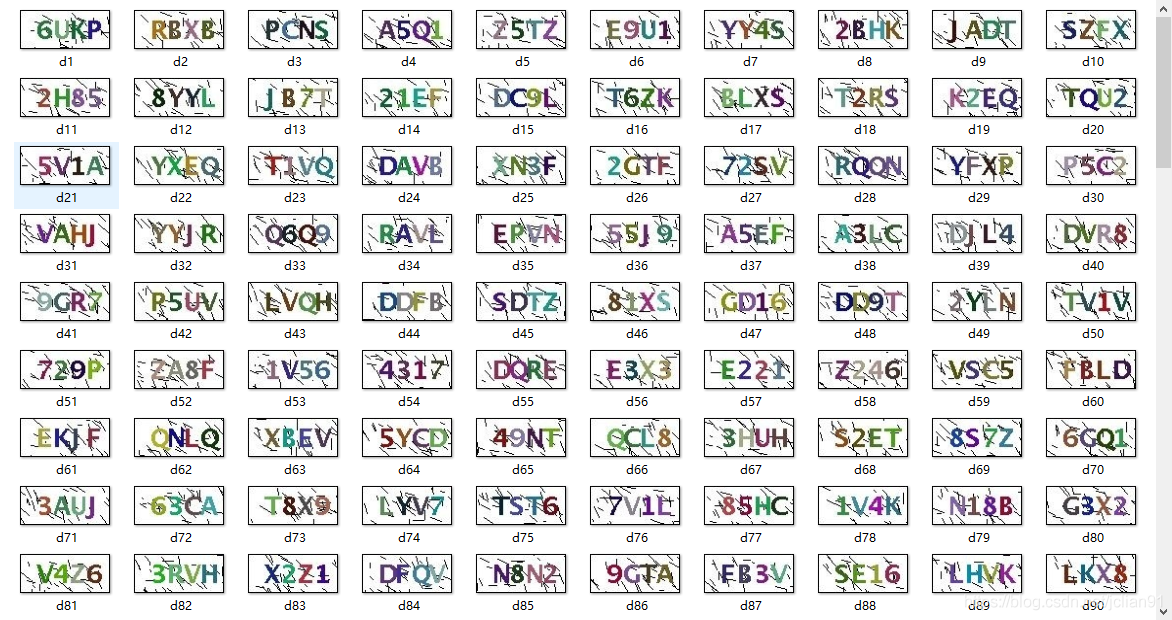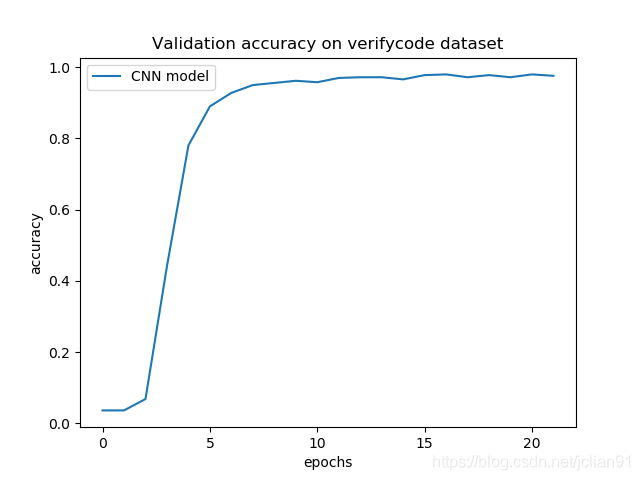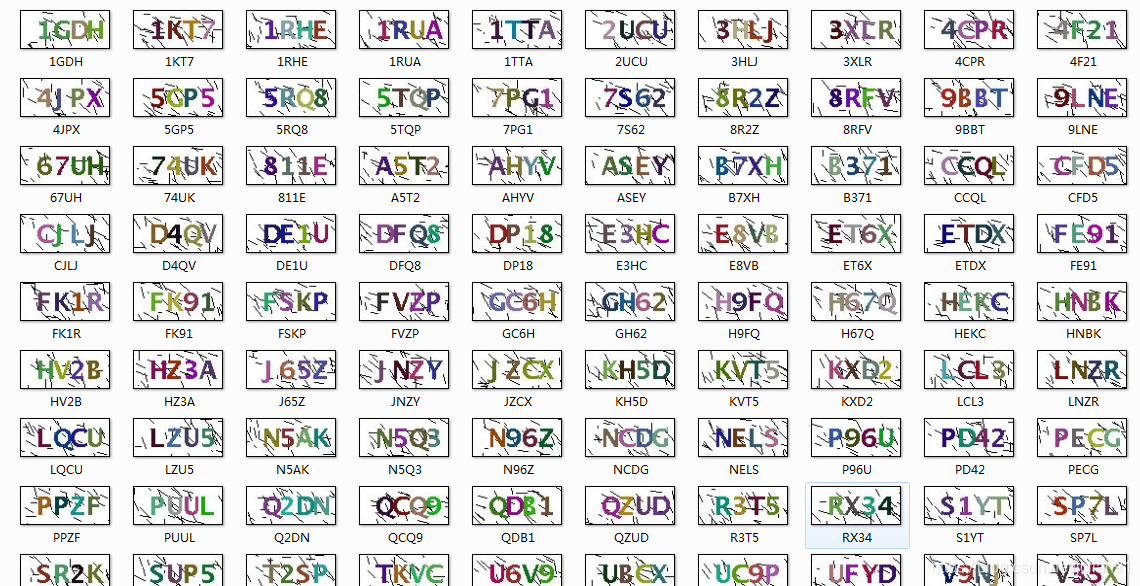1
2
3
4
5
6
7
8
9
10
11
12
13
14
15
16
17
18
19
20
21
22
23
24
25
26
27
28
29
30
31
32
33
34
35
36
37
38
39
40
41
42
43
44
45
46
47
48
49
50
51
52
53
54
55
56
57
58
59
60
61
62
63
64
65
66
67
68
69
70
71
72
73
74
75
76
77
78
79
80
81
82
83
84
85
86
87
88
89
90
91
92
93
94
95
96
97
98
99
100
101
102
103
104
105
106
107
108
109
110
111
112
113
114
115
116
117
118
119
120
121
122
123
124
125
126
127
128
129
130
131
132
133
134
135
136
137
138
139
140
141
142
143
144
145
146
147
148
149
150
151
152
153
154
155
156
157
158
159
160
161
162
163
164
165
166
167
168
169
170
171
|
import os
import cv2
import numpy as np
def split_picture(imagepath):
gray = cv2.imread(imagepath, 0)
height, width = gray.shape
for i in range(width):
gray[0, i] = 255
gray[height-1, i] = 255
for j in range(height):
gray[j, 0] = 255
gray[j, width-1] = 255
blur = cv2.medianBlur(gray, 3)
ret,thresh1 = cv2.threshold(blur, 200, 255, cv2.THRESH_BINARY)
chars_list = []
image, contours, hierarchy = cv2.findContours(thresh1, 2, 2)
for cnt in contours:
x, y, w, h = cv2.boundingRect(cnt)
if x != 0 and y != 0 and w*h >= 100:
chars_list.append((x,y,w,h))
sorted_chars_list = sorted(chars_list, key=lambda x:x[0])
for i,item in enumerate(sorted_chars_list):
x, y, w, h = item
cv2.imwrite('F://test_verifycode/chars/%d.jpg'%(i+1), thresh1[y:y+h, x:x+w])
def remove_edge_picture(imagepath):
image = cv2.imread(imagepath, 0)
height, width = image.shape
corner_list = [image[0,0] < 127,
image[height-1, 0] < 127,
image[0, width-1]<127,
image[ height-1, width-1] < 127
]
if sum(corner_list) >= 3:
os.remove(imagepath)
def resplit_with_parts(imagepath, parts):
image = cv2.imread(imagepath, 0)
os.remove(imagepath)
height, width = image.shape
file_name = imagepath.split('/')[-1].split(r'.')[0]
step = width//parts
start = 0
for i in range(parts):
cv2.imwrite('F://test_verifycode/chars/%s.jpg'%(file_name+'-'+str(i)), \
image[:, start:start+step])
start += step
def resplit(imagepath):
image = cv2.imread(imagepath, 0)
height, width = image.shape
if width >= 64:
resplit_with_parts(imagepath, 4)
elif width >= 48:
resplit_with_parts(imagepath, 3)
elif width >= 26:
resplit_with_parts(imagepath, 2)
def convert(dir, file):
imagepath = dir+'/'+file
image = cv2.imread(imagepath, 0)
ret, thresh = cv2.threshold(image, 127, 255, cv2.THRESH_BINARY)
img = cv2.resize(thresh, (16, 20), interpolation=cv2.INTER_AREA)
cv2.imwrite('%s/%s' % (dir, file), img)
def Read_Data(dir, file):
imagepath = dir+'/'+file
image = cv2.imread(imagepath, 0)
ret, thresh = cv2.threshold(image, 127, 255, cv2.THRESH_BINARY)
bin_values = [1 if pixel==255 else 0 for pixel in thresh.ravel()]
return bin_values
def predict(VerifyCodePath):
dir = 'F://test_verifycode/chars'
files = os.listdir(dir)
if files:
for file in files:
os.remove(dir + '/' + file)
split_picture(VerifyCodePath)
files = os.listdir(dir)
if not files:
print('查看的文件夹为空!')
else:
for file in files:
remove_edge_picture(dir + '/' + file)
for file in os.listdir(dir):
resplit(dir + '/' + file)
for file in os.listdir(dir):
convert(dir, file)
files = sorted(os.listdir(dir), key=lambda x: x[0])
table = np.array([Read_Data(dir, file) for file in files]).reshape(-1,20,16,1)
mp = 'F://verifycode_data/verifycode_Keras.h5'
from keras.models import load_model
cnn = load_model(mp)
y_pred = cnn.predict(table)
predictions = np.argmax(y_pred, axis=1)
keys = range(31)
vals = ['1', '2', '3', '4', '5', '6', '7', '8', '9', 'A', 'B', 'C', 'D', 'E', 'F', 'G', 'H', 'J', 'K', 'L', 'N',
'P', 'Q', 'R', 'S', 'T', 'U', 'V', 'X', 'Y', 'Z']
label_dict = dict(zip(keys, vals))
return ''.join([label_dict[pred] for pred in predictions])
def main():
dir = 'F://VerifyCode/'
correct = 0
for i, file in enumerate(os.listdir(dir)):
true_label = file.split('.')[0]
VerifyCodePath = dir+file
pred = predict(VerifyCodePath)
if true_label == pred:
correct += 1
print(i+1, (true_label, pred), true_label == pred, correct)
total = len(os.listdir(dir))
print('\n总共图片:%d张\n识别正确:%d张\n识别准确率:%.2f%%.'\
%(total, correct, correct*100/total))
main()
|






